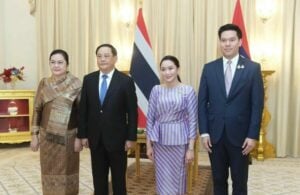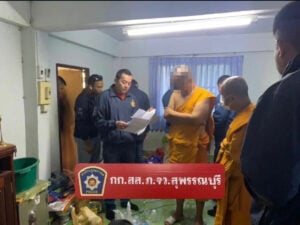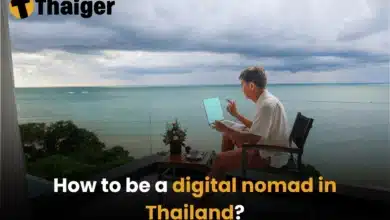The rich influence of Hinduism on Thai culture
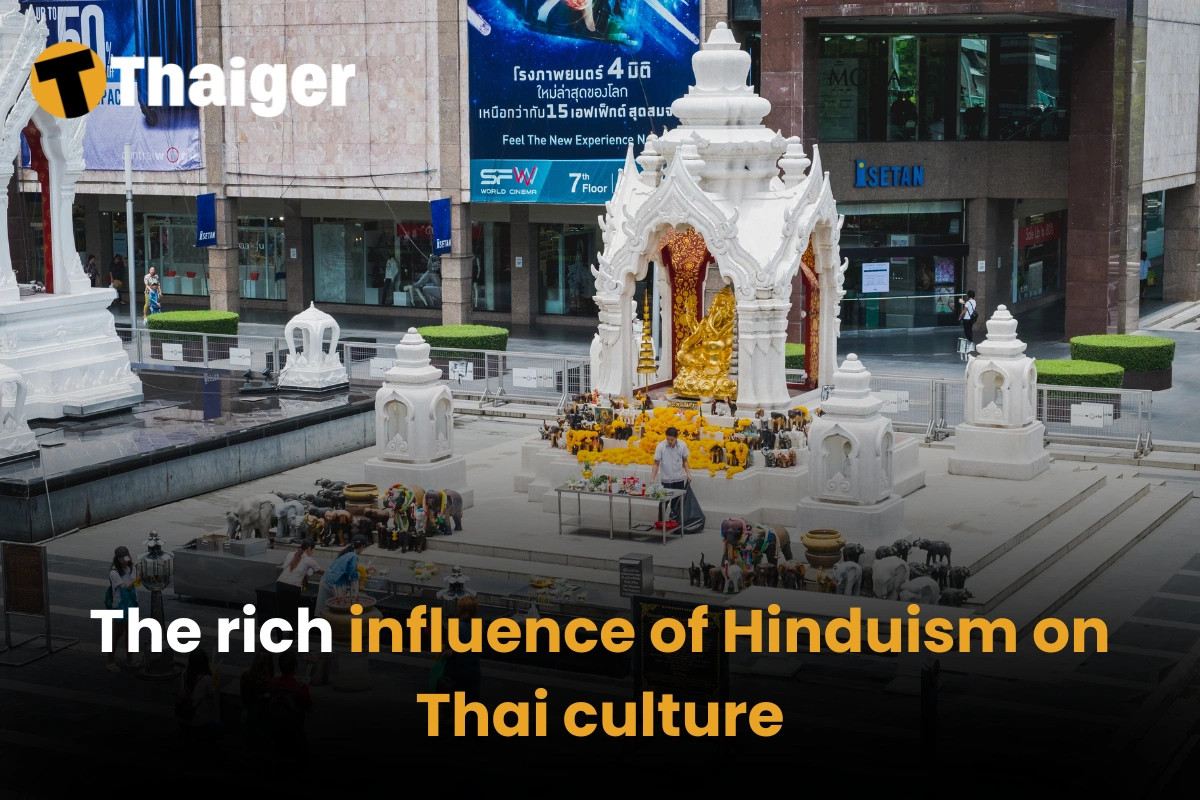
Hinduism has played an important role in shaping Thailand’s culture and traditions over many centuries. Through its historical connection with India, Hindu practices have blended with Thai Buddhism, influencing festivals, rituals, and everyday life. This study looks at how Hindu elements remain part of Thai society, often mixed with Buddhist traditions. Scholars use ideas like syncretism, compartmentalism, and hybridity to explain this mix. By addressing claims such as Justin McDaniel’s statement that “there is no Hinduism in Thailand,” this exploration highlights the quiet but lasting influence of Hinduism on Thailand’s cultural and religious identity.
The historical roots of Hinduism in Thailand
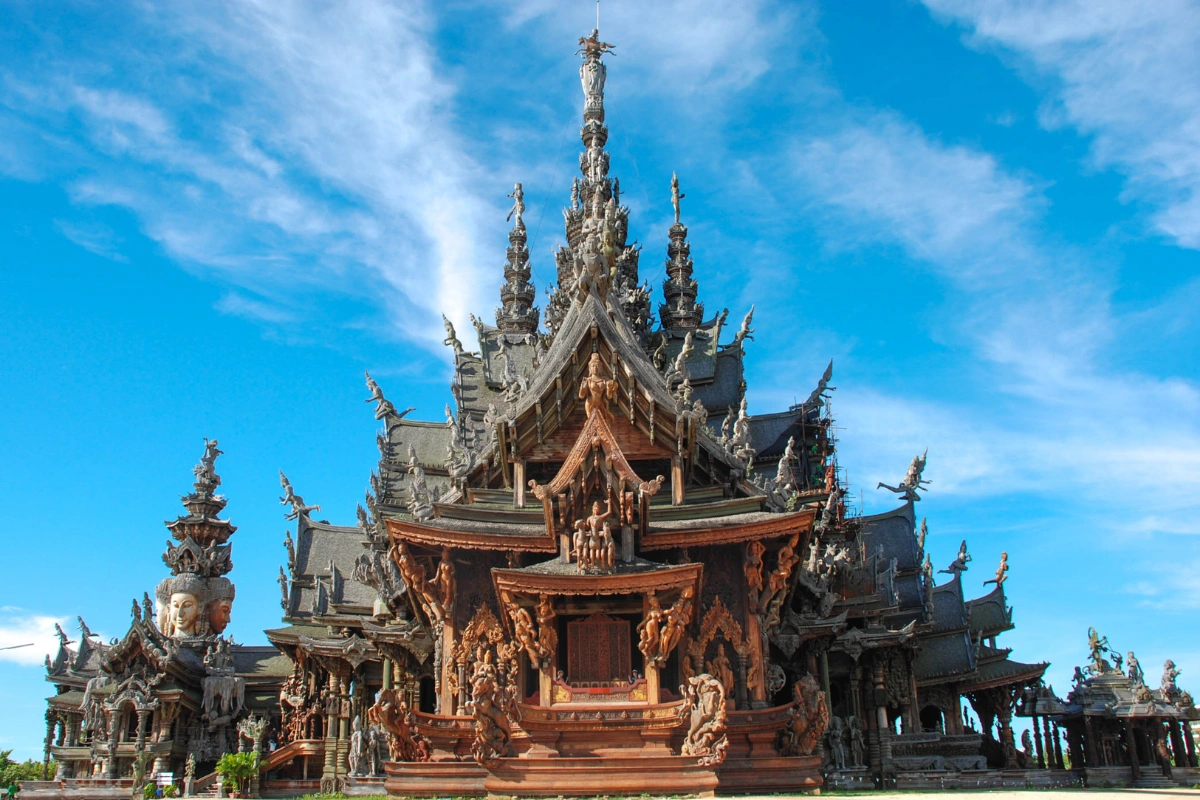
The influence of Hinduism in Thailand reveals a rich heritage that is deeply woven into the country’s culture and history. This discussion highlights key aspects that show how Hinduism continues to hold a meaningful place in Thai society, even though it is often overshadowed by Buddhism.
The arrival of Hindu influences
Hinduism began influencing Thailand around the 1st century CE through trade and cultural exchanges brought by Indian merchants and nearby civilisations like the Mon and Khmer. These interactions introduced not only goods but also spiritual ideas and practices, laying the groundwork for Hindu traditions in Thai culture.
Archaeological findings show that Hindu influences were especially strong during the Dvaravati and Srivijaya periods, when Indian traders and priests helped spread religious beliefs and practices. This blending of cultures created a rich mix of traditions, architecture, and beliefs that still shape Thai society today, highlighting the lasting impact of Hinduism on Thailand’s cultural identity.
Evolution of Hindu traditions and practices
Over the centuries, Hindu traditions in Thailand have blended naturally with local beliefs and Buddhism. This mix is clearly seen in Thai culture, where Hindu gods like Brahma, Vishnu, and Shiva are honoured alongside the Buddha. This fusion goes beyond religion, influencing festivals, rituals, and art, creating a unique form of Thai spirituality.
Exploring the Hindu deities of Thailand
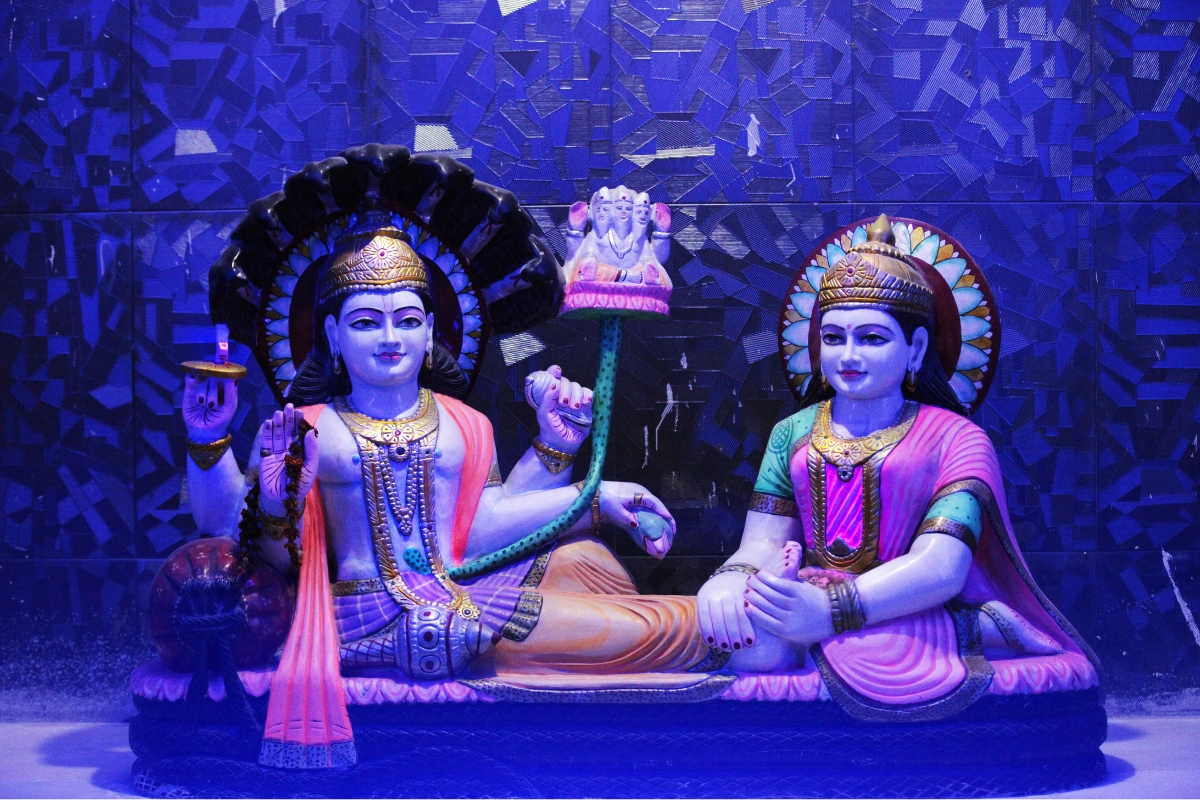
The prominence of Vishnu sculptures
The presence of Vishnu sculptures in Thailand reflects the deep connection between Hinduism and Thai culture. From the grand statue at Suvarnabhumi Airport to smaller, intricate figures found in temples, each sculpture highlights the harmony between Hindu and Buddhist traditions.
Vishnu, known as the preserver in the Hindu Trinity, appears in various forms across the country, each telling a story of faith, art, and cultural unity. These sculptures are not only beautiful works of art but also symbols of how different beliefs can blend together so naturally in Thailand.
The Shiva cult and its manifestations
The worship of Shiva in Thailand is another important part of Hindu influence in the country. Shiva, known for his deep spiritual significance, is honoured through symbols like the Lingam, which can be found in many sacred places. These symbols play a role in ceremonies shared by both Hindu and Buddhist communities.
The annual Maha Shivaratri festival is a special time when people come together to celebrate Shiva’s cosmic dance and his union with Parvati. This lively event shows how Hindu traditions continue to blend naturally with Thai culture, even in a mostly Buddhist society.
The interweaving of Hinduism and Buddhist traditions
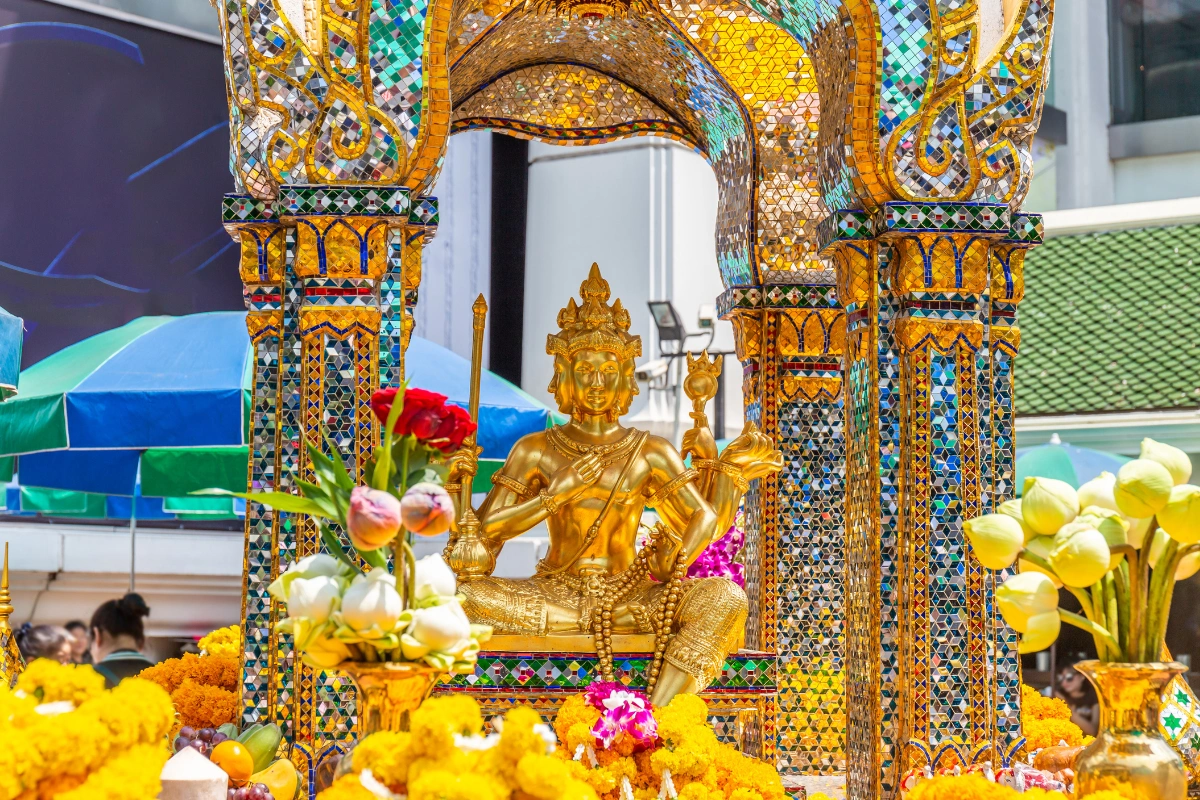
Shared religious sites and iconography
Rituals and festivals blending Hindu and Buddhist elements
In Thailand, the beautiful blend of Hinduism and Buddhism shines through in many rituals and festivals, mixing bits from both faiths. A perfect example is the Loy Krathong festival, where folks gently float baskets on rivers to honour Buddha and give a nod to Ganga, the Hindu water goddess.
This lovely ceremony symbolizes letting go of bad thoughts and troubles and embracing teachings from both religions. Plus, when it’s time for the Thai king’s coronation ceremony, you’ll notice Hindu rituals are part of it too, showing how much respect and love there is for Hindu traditions in Thai culture.
Modern Hindu communities in Thailand
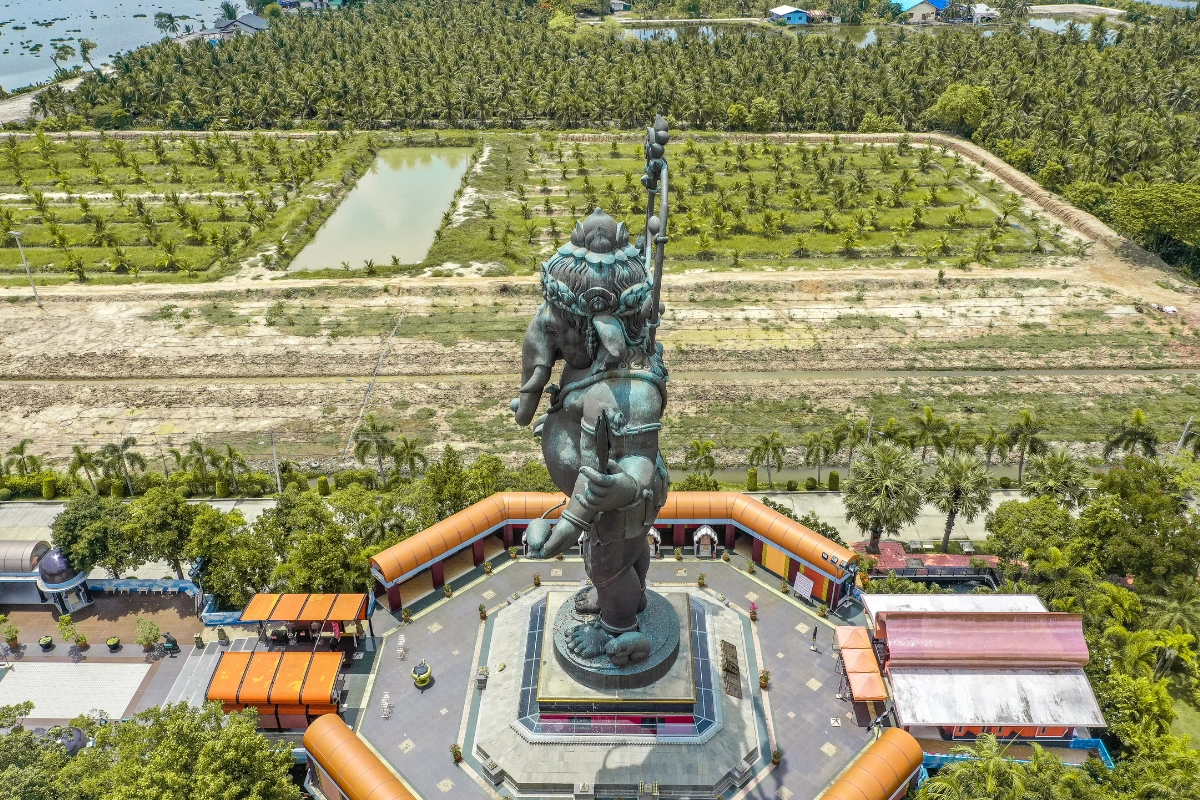
Distribution and demographic trends
Hinduism in Thailand is diverse and vibrant, combining ancient traditions with modern practices. In cities like Bangkok, the Hindu community is especially active, with temples such as Dev Mandir serving as important centres of worship.
The Hindu population in Thailand is growing and includes not only ethnic Indians but also many Thais who take part in Hindu festivals and rituals. This reflects the broad appeal and integration of Hindu practices within Thai society.
Contemporary practices and Hindu temples
The cultural impact of Hinduism on Thai society
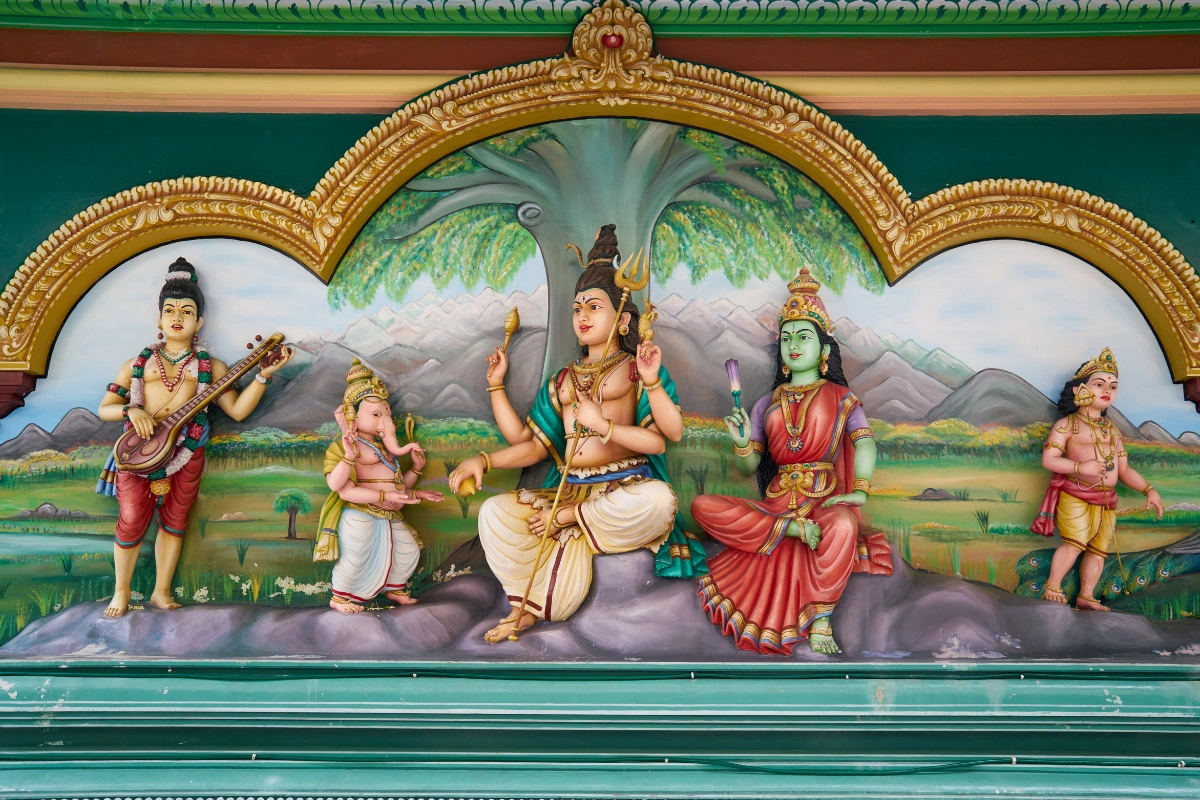
Diving into Hinduism in Thailand is like stumbling upon a secret chest full of cultural jewels! It’s incredible to notice how Hindu traditions have snugly fit themselves into every corner of Thai life, influencing everything from everyday customs to art and literature. This lovely blend highlights the beauty of both cultures, adding so much richness to the country’s religious scene.
Art and Architecture
Art and architecture in Thailand prominently display Hinduism’s influence. Temples and shrines dedicated to Hindu gods, such as the Erawan Shrine in Bangkok, stand as testaments to the deep-rooted presence of Hinduism. This shrine, dedicated to Brahma, attracts both Thais and international visitors, showcasing how Hindu deities are woven into Thailand’s spiritual fabric.
Similarly, the grand depiction of the Ramakien, Thailand’s adaptation of the Hindu epic Ramayana, adorns the walls of the Emerald Buddha Temple, highlighting Hindu mythology’s significance in Thai culture.
Literature and performing arts
In literature and performing arts, Hinduism’s impact is equally profound. The Ramakien, as mentioned, is not just an artistic representation but also forms a major part of Thai literature, offering moral and ethical lessons through its epic narrative. Performances based on this epic, such as traditional Thai Khon masks and dance dramas, bring Hindu mythology to life on stage, allowing audiences to engage with these ancient stories in a deeply personal way.
Moreover, Hindu concepts and deities feature in classical Thai literature, including poetry and plays, embedding Hindu philosophy within the tapestry of Thai cultural heritage. The fusion of Hindu and Thai elements in these works demonstrates the adaptability and enduring nature of Hindu narratives, shaping the moral and spiritual discourse in Thailand.
Preserving and celebrating Hindu heritage
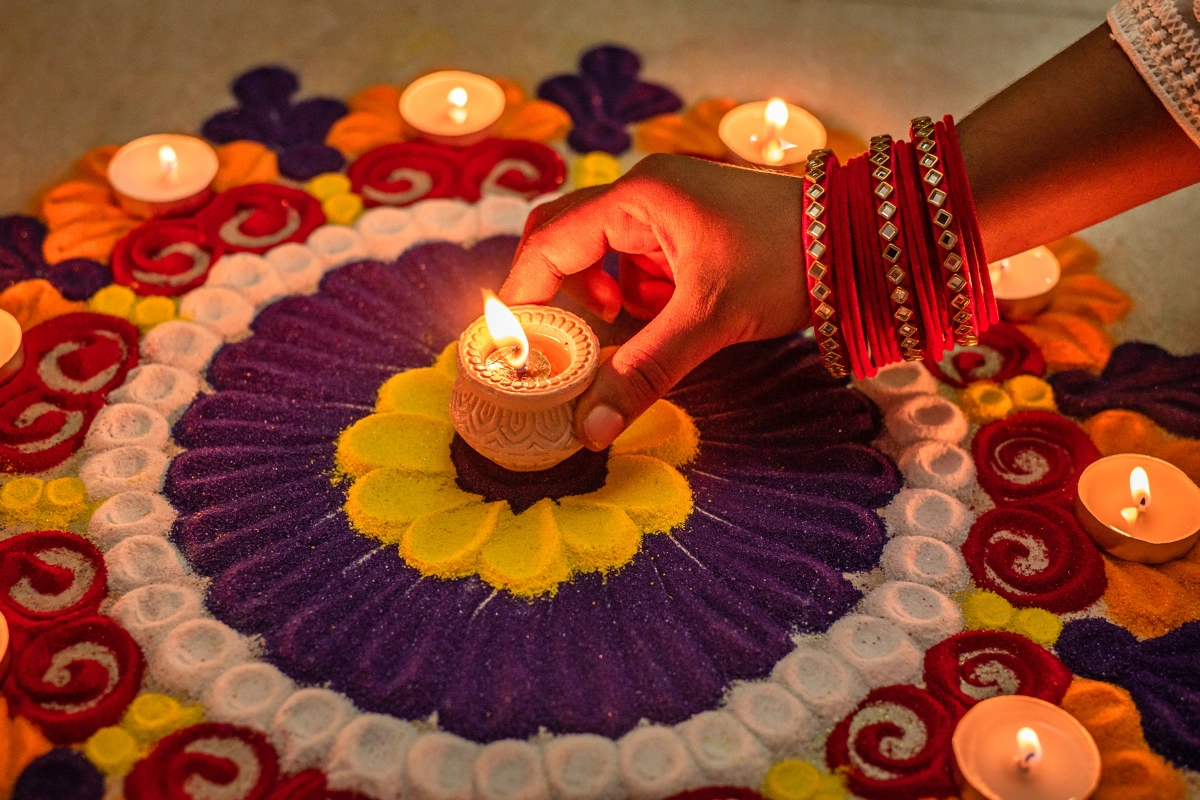
Conservation of historical sites
Thailand’s efforts to conserve historical sites tied to Hinduism are both impressive and important. In a country where Hindu and Buddhist traditions blend naturally, significant resources are dedicated to preserving temples and shrines that honour deities like Brahma, Vishnu, and Shiva.
Cultural and religious tourism
Cultural and religious tourism plays a pivotal role in celebrating and preserving Hindu heritage in Thailand. By welcoming visitors from around the world to experience Hindu festivals like Maha Shivaratri and Diwali, Thailand not only boosts its tourism sector but also educates international audiences on the Hindu religion and its significance in Thai culture.
The Grand Palace in Bangkok, with its Ramakien Gallery depicting scenes from the Hindu epic Ramayana, stands as a testament to the fusion of Hindu and Thai culture, attracting thousands of tourists each year who leave with a deeper appreciation of Thailand’s Hindu heritage.
Hinduism’s influence in Thailand runs deep, shaping its culture, traditions, and spiritual practices over centuries. Through historical connections with India, Hindu elements have seamlessly blended with Thai Buddhism, creating a unique harmony reflected in temples, festivals, and rituals. Deities like Brahma, Vishnu, and Shiva are honoured alongside the Buddha, with iconic sites such as the Erawan Shrine and the grand depictions of the Ramakien showcasing this fusion. Hindu traditions also leave a lasting mark on Thai art, literature, and performances, while efforts to preserve historical sites and celebrate festivals like Diwali and Maha Shivaratri keep this heritage alive. To learn more about Thailand’s diverse religious landscape, explore Exploring Sikhism in Thailand: Holy Sites, Practices, and Places.
FAQ for the rich influence of Hinduism on Thai culture
What is the influence of Hinduism on Thai culture?
Hinduism has significantly shaped Thai culture and traditions over centuries, blending seamlessly with Buddhism. This influence is evident in festivals, rituals, and everyday practices, showcasing a rich cultural heritage that incorporates elements from both religions.
How are Hindu deities represented in Thailand?
Hindu deities such as Brahma, Vishnu, and Shiva are honoured alongside the Buddha in Thai culture. Temples often feature sculptures of these gods, reflecting the harmonious coexistence of Hindu and Buddhist traditions within Thai spirituality.
What are some examples of festivals that blend Hindu and Buddhist elements?
Festivals like Loy Krathong exemplify the blend of Hindu and Buddhist elements, where participants float baskets on rivers to honour both Buddha and Ganga, the Hindu water goddess. The Thai king's coronation ceremony also incorporates Hindu rituals, highlighting the respect for Hindu traditions.
How does Hinduism influence Thai art and architecture?
Hinduism's influence is prominently displayed in Thai art and architecture, with temples dedicated to Hindu gods and depictions of the Ramakien, Thailand's adaptation of the Ramayana. These artistic expressions reflect the deep-rooted presence of Hindu mythology within Thai culture.



















